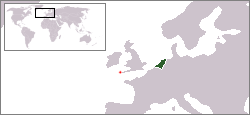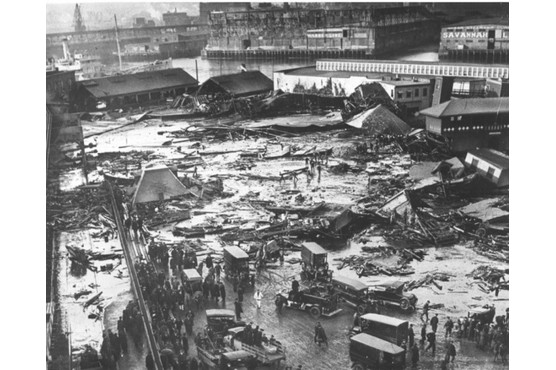You are using an out of date browser. It may not display this or other websites correctly.
You should upgrade or use an alternative browser.
You should upgrade or use an alternative browser.
Did you know? 2
- Thread starter Sanjurika
- Start date
- Pronouns
- Snek
- TNP Nation
- Territorio di Nessuno
[quote uid=6120 name="Sanjurika" ]Moar[/quote]
It will resume from next Monday.
In the meantime i suggest you to read the old thread if you want

[quote uid=6120 name="Sanjurika" ]Oops posted same thing twice. Sorry.

[/quote]
Don't worry, It happens

It will resume from next Monday.
In the meantime i suggest you to read the old thread if you want

[quote uid=6120 name="Sanjurika" ]Oops posted same thing twice. Sorry.

[/quote]
Don't worry, It happens

- Pronouns
- Snek
- TNP Nation
- Territorio di Nessuno
Did you know that the world longest war is also the bloodless one?

The Three Hundred and Thirty Five Years' War (30 March 1651 – 17 April 1986) was a war between the Netherlands and the Isles of Scilly (located off the southwest coast of England), at that time under British Royalist control. Despite the uncertain validity of the declaration of war, and thus uncertainty about whether or not a state of war ever actually existed in the first place, this war is considered one of the world longest and a bloodless wars.
In 1648, during the English Civil war, Oliver Cromwell and the Parliamentarian's forces pushed the Royalist out from their last stronghold in mainland Cornwall. The Royalist Navy was forced to retreat to the Isles of Scilly, which lay off the Cornish coast and were under the ownership of Royalist John Granvile.
At that time the Netherlands, in order to maintain their alliance with England, were sided with the Parliamentarians. The Dutch Navy was suffering heavy losses from the Royalist fleet based in Scilly so, on 30 March 1651, Admiral Maarten Harpertszoon Tromp arrived in Scilly to demand reparation from the Royalist fleet for the Dutch ships and goods taken by them. However, according to Bulstrode Whitelocke's memorials, "Tromp came to Pendennis and related that he had been to Scilly to demand reparation for the Dutch ships and goods taken by them; and receiving no satisfactory answer, he had, according to his Commission, declared war on them".
In June 1651, soon after the declaration of war, the Parliamentarian forces under Admiral Robert Blake forced the Royalist fleet to surrender. The Dutch fleet, no longer under threat, left without firing a shot but, due to the obscurity of the declaration of war, they didn't officially declare peace.
In 1986, Roy Duncan, historian and Chairman of the Isles of Scilly Council, wrote to the Dutch Embassy in London to dispose of the myth that the islands were still at war. Embassy staff found the myth to be accurate and Duncan invited the Dutch ambassador Jonkheer Rein Huydecoper to visit the islands and signed a peace treaty on 17 April 1986, 335 years after the "war" began. The Dutch ambassador joked that it must have been harrowing to the Scillonians "to know we could have attacked at any moment."
To date, many historians still have doubts on its authenticity like Graeme Donald ,that in his book "Loose Cannons: 101 Myths, Mishaps and Misadventurers of Military History" argues that no such war could have existed because the Isles were not an independent nation and that the Netherlands could not sign a peace treaty with islands that are only a part of the United Kingdom, or Bowley, who argues that "Tromp had no 'Commission' from his government to declare war on the rebels in Scilly.

The Three Hundred and Thirty Five Years' War (30 March 1651 – 17 April 1986) was a war between the Netherlands and the Isles of Scilly (located off the southwest coast of England), at that time under British Royalist control. Despite the uncertain validity of the declaration of war, and thus uncertainty about whether or not a state of war ever actually existed in the first place, this war is considered one of the world longest and a bloodless wars.
In 1648, during the English Civil war, Oliver Cromwell and the Parliamentarian's forces pushed the Royalist out from their last stronghold in mainland Cornwall. The Royalist Navy was forced to retreat to the Isles of Scilly, which lay off the Cornish coast and were under the ownership of Royalist John Granvile.
At that time the Netherlands, in order to maintain their alliance with England, were sided with the Parliamentarians. The Dutch Navy was suffering heavy losses from the Royalist fleet based in Scilly so, on 30 March 1651, Admiral Maarten Harpertszoon Tromp arrived in Scilly to demand reparation from the Royalist fleet for the Dutch ships and goods taken by them. However, according to Bulstrode Whitelocke's memorials, "Tromp came to Pendennis and related that he had been to Scilly to demand reparation for the Dutch ships and goods taken by them; and receiving no satisfactory answer, he had, according to his Commission, declared war on them".
In June 1651, soon after the declaration of war, the Parliamentarian forces under Admiral Robert Blake forced the Royalist fleet to surrender. The Dutch fleet, no longer under threat, left without firing a shot but, due to the obscurity of the declaration of war, they didn't officially declare peace.
In 1986, Roy Duncan, historian and Chairman of the Isles of Scilly Council, wrote to the Dutch Embassy in London to dispose of the myth that the islands were still at war. Embassy staff found the myth to be accurate and Duncan invited the Dutch ambassador Jonkheer Rein Huydecoper to visit the islands and signed a peace treaty on 17 April 1986, 335 years after the "war" began. The Dutch ambassador joked that it must have been harrowing to the Scillonians "to know we could have attacked at any moment."
To date, many historians still have doubts on its authenticity like Graeme Donald ,that in his book "Loose Cannons: 101 Myths, Mishaps and Misadventurers of Military History" argues that no such war could have existed because the Isles were not an independent nation and that the Netherlands could not sign a peace treaty with islands that are only a part of the United Kingdom, or Bowley, who argues that "Tromp had no 'Commission' from his government to declare war on the rebels in Scilly.
- TNP Nation
- Aenglaland
Interesting read! Nice!
Keep 'em coming
Keep 'em coming
- Pronouns
- Snek
- TNP Nation
- Territorio di Nessuno
Thanks LohInteresting read! Nice!
Keep 'em coming

The Empire Of Sirbil
Registered
- TNP Nation
- Sirbil
Ka Ching
Proud TNPer
Did you know Boston witnessed a ‘toffee-apple’ tsunami?

On Wednesday 15 January 1919 in Boston, Massachusetts, a 90-foot wide cast iron tank containing two-and-a-half million gallons of crude molasses (for rum manufacture) exploded, probably because its contents had expanded during a rapid overnight rise in temperature.
The tank, belonging to the United States Industrial Alcohol Company, was set 50 feet above street level; its entire contents spilled within a few seconds and with no warning. The resulting thick, sticky “wall of molasses”, which at times was up to 15 feet high, ran through the streets, reaching a speed of 35mph.
It demolished buildings, tearing them from their foundations; it carried off vehicles and drowned horses. People who tried to outrun the wave were engulfed and drowned where they fell. In all, 21 people were killed and 150 injured (arriving at hospital, according to eyewitnesses “looking like toffee-apples”). The clean-up took weeks, and for decades afterwards the locals claimed they could distinctly smell molasses in hot weather.

On Wednesday 15 January 1919 in Boston, Massachusetts, a 90-foot wide cast iron tank containing two-and-a-half million gallons of crude molasses (for rum manufacture) exploded, probably because its contents had expanded during a rapid overnight rise in temperature.
The tank, belonging to the United States Industrial Alcohol Company, was set 50 feet above street level; its entire contents spilled within a few seconds and with no warning. The resulting thick, sticky “wall of molasses”, which at times was up to 15 feet high, ran through the streets, reaching a speed of 35mph.
It demolished buildings, tearing them from their foundations; it carried off vehicles and drowned horses. People who tried to outrun the wave were engulfed and drowned where they fell. In all, 21 people were killed and 150 injured (arriving at hospital, according to eyewitnesses “looking like toffee-apples”). The clean-up took weeks, and for decades afterwards the locals claimed they could distinctly smell molasses in hot weather.
atnmachine
Registered
I remember seeing a Sam O'Nella Academy video about this
Share:

